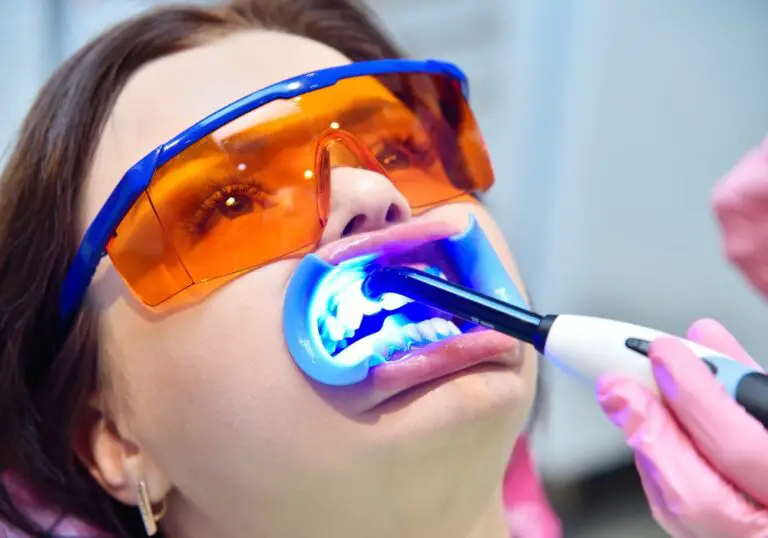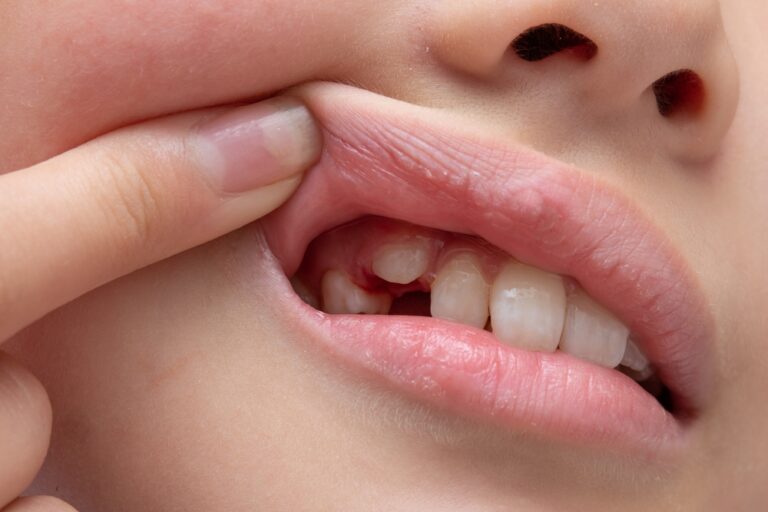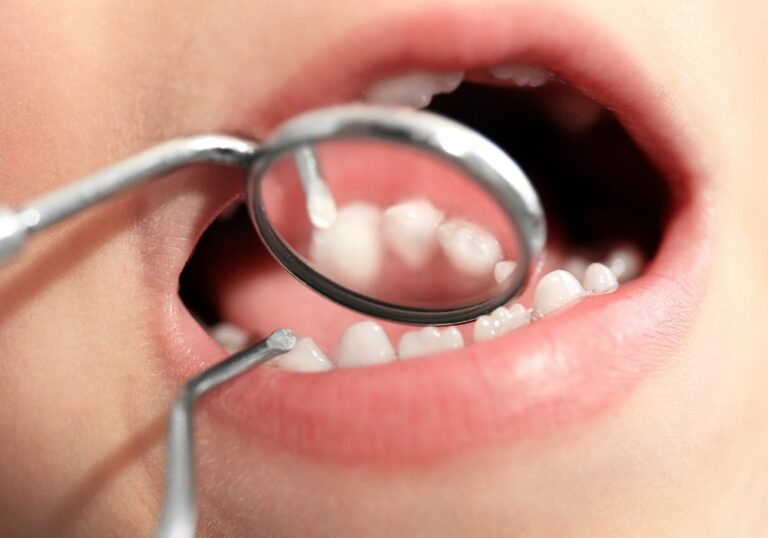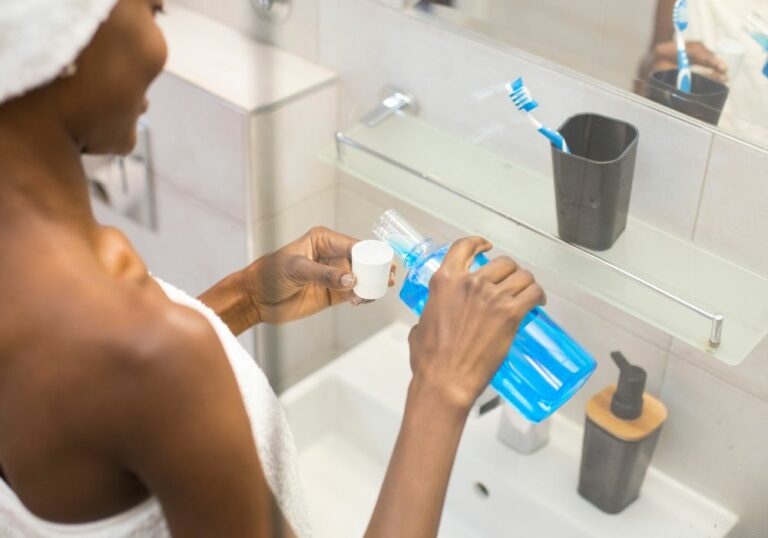After a tooth extraction, it is important to take precautions to reduce the risk of infection. Infections can occur when bacteria enter the open wound left behind after the tooth is removed. While your dentist may prescribe antibiotics to prevent infection, there are additional steps you can take to reduce your risk.
One of the most important things you can do to reduce the risk of infection after a tooth extraction is to keep the extraction site clean. Your dentist will likely provide you with gauze to bite down on to help stop bleeding and promote clotting. It is important to change this gauze regularly and to avoid touching the extraction site with your fingers or tongue. You should also avoid rinsing your mouth for the first 24 hours after the extraction to allow the blood clot to form properly. After 24 hours, you can begin rinsing your mouth gently with warm salt water to help keep the area clean.
Another important step in reducing the risk of infection is to avoid smoking or using tobacco products. Smoking can slow down the healing process and increase your risk of developing an infection. It is important to avoid smoking for at least 48 hours after the extraction, but quitting altogether can greatly reduce your risk of complications. Additionally, you should avoid drinking through a straw or spitting forcefully, as these actions can also dislodge the blood clot and increase your risk of infection.
Understanding Tooth Extraction
If you’re experiencing severe tooth pain or have a damaged or decayed tooth, your dentist may recommend a tooth extraction. While the thought of having a tooth removed may seem daunting, it’s a common and routine procedure that can help alleviate pain and prevent further complications.
Why Tooth Extraction is Necessary?
Tooth extraction is often necessary when a tooth is severely damaged or decayed beyond repair. Other reasons for tooth extraction may include:
- Crowding of teeth
- Infection or risk of infection
- Gum disease
- Impacted wisdom teeth
Your dentist will evaluate your specific situation and determine if tooth extraction is the best course of action.
Types of Tooth Extraction
There are two types of tooth extraction: simple and surgical. Simple extractions are performed on teeth that are visible and easy to access, while surgical extractions are necessary for teeth that are impacted or have not yet erupted.
During a simple extraction, your dentist will numb the area around the tooth and use forceps to gently remove the tooth. A surgical extraction may require an incision in the gum to access the tooth, and in some cases, the tooth may need to be broken into smaller pieces for easier removal.
Your dentist will discuss which type of extraction is necessary for your situation and provide instructions for aftercare to reduce the risk of infection and promote healing.
Pre-Procedure Preparations
Before undergoing a tooth extraction, there are a few things you can do to reduce the risk of infection and ensure a smooth recovery. Here are two important preparations to keep in mind:
Medical History Review
Your dentist or oral surgeon will need to review your medical history before the procedure to ensure that you are not at risk for any complications. Be sure to inform them of any medical conditions you have, such as heart disease, diabetes, or a weakened immune system, as well as any medications you are taking. This information will help your dentist determine if any additional precautions need to be taken before or after the extraction.
Pre-Extraction Dental Cleaning
It is important to have a clean mouth before undergoing a tooth extraction, as bacteria in the mouth can increase the risk of infection. Your dentist may recommend that you undergo a dental cleaning prior to the procedure to remove any plaque or tartar buildup. This can help reduce the risk of infection and promote faster healing.
In addition to a dental cleaning, your dentist may also recommend that you rinse your mouth with an antiseptic mouthwash before the procedure. This can help kill any bacteria in the mouth and reduce the risk of infection.
By reviewing your medical history and ensuring that your mouth is clean before the procedure, you can help reduce the risk of infection and promote a smooth recovery after tooth extraction.
Post-Extraction Care
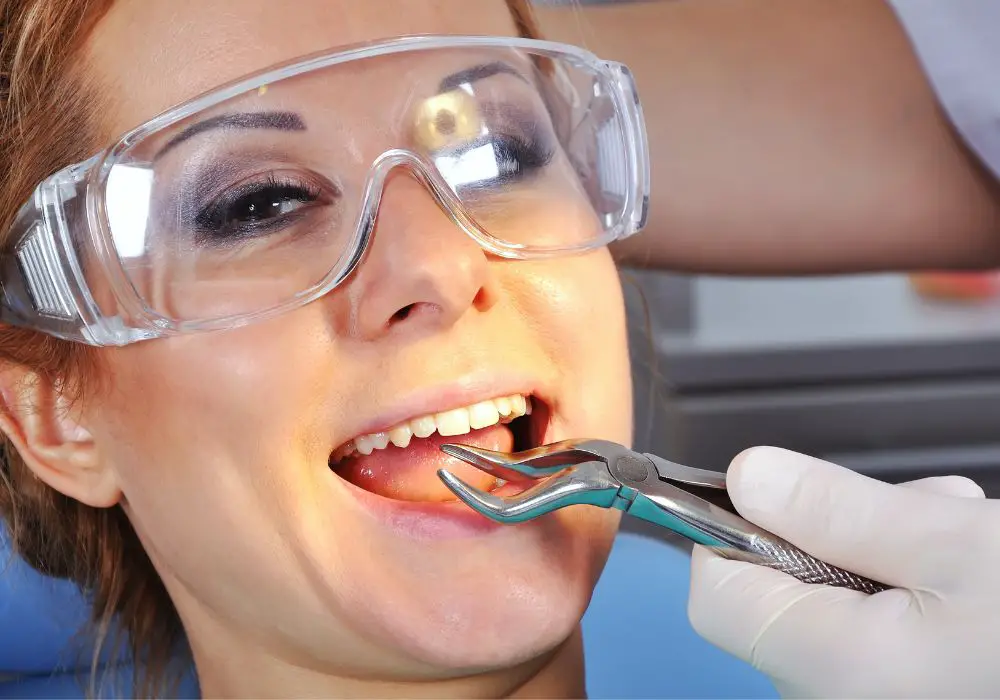
After a tooth extraction, it is important to take proper care of the area to reduce the risk of infection and promote healing. Here are some tips to help you care for your mouth after a tooth extraction.
Immediate Aftercare
Immediately after the extraction, your dentist will place a gauze pad over the extraction site to help stop the bleeding. Bite down on the gauze pad for 30-45 minutes, changing it as needed. After the bleeding has stopped, remove the gauze pad and discard it.
It is important to rest for the remainder of the day after the extraction and avoid any strenuous activity. You should also avoid smoking, as it can delay the healing process and increase the risk of infection.
Proper Oral Hygiene
Keeping your mouth clean is essential to prevent infection. However, you should avoid brushing or rinsing the extraction site for the first 24 hours after the procedure. After the first day, you can gently rinse your mouth with warm salt water to help keep the area clean.
Brush your teeth and tongue gently, avoiding the extraction site, and use a soft-bristled toothbrush. You can resume flossing after a few days, but be gentle around the extraction site.
Avoiding Certain Activities
To avoid complications and promote healing, there are certain activities you should avoid after a tooth extraction. These include:
- Drinking through a straw, as the suction can dislodge the blood clot and delay healing.
- Eating hard, crunchy, or sticky foods that can irritate the extraction site.
- Drinking alcohol, as it can increase bleeding and delay healing.
- Smoking, as it can delay healing and increase the risk of infection.
By following these tips, you can reduce the risk of infection and promote healing after a tooth extraction. If you experience any unusual symptoms, such as severe pain or swelling, contact your dentist immediately.
Recognizing Infection Signs
After a tooth extraction, it is important to be aware of the signs of infection. Infections can be painful and cause further complications if not treated promptly. In this section, we will discuss the physical symptoms of infection and when to seek medical attention.
Physical Symptoms
Here are some physical symptoms that may indicate an infection after a tooth extraction:
- Fever
- Swelling
- Pain that gets worse instead of better
- Pus or discharge from the extraction site
- Bad taste or odor in your mouth
- Redness or warmth around the extraction site
- Difficulty opening your mouth
If you experience any of these symptoms, it is important to contact your dentist or oral surgeon as soon as possible.
When to Seek Medical Attention?
If you experience any of the following symptoms, seek medical attention immediately:
- Difficulty breathing or swallowing
- Severe swelling that affects your ability to breathe or swallow
- High fever
- Severe pain that is not relieved by over-the-counter pain medications
- Uncontrolled bleeding from the extraction site
It is important to remember that infections can occur even if you follow all of the post-operative care instructions. If you suspect that you may have an infection, do not hesitate to contact your dentist or oral surgeon. Early treatment is key to preventing further complications.
Preventing Infection

After a tooth extraction, it is essential to take care of the extraction site to prevent infection. Here are some ways to reduce the risk of infection:
Antibiotics Usage
Your dentist or oral surgeon may prescribe antibiotics to prevent infection after tooth extraction. Follow the instructions carefully and take the full course of antibiotics as prescribed, even if you start feeling better. Antibiotics help kill bacteria that can cause an infection, but they won’t work if you don’t take them as directed.
Regular Dental Check-Ups
Regular dental check-ups can help detect and treat any dental problems before they become severe. Your dentist can also monitor the healing process after tooth extraction and check for any signs of infection. Be sure to schedule routine dental check-ups every six months to maintain good oral health.
In addition to antibiotics and regular dental check-ups, here are some other ways to prevent infection after tooth extraction:
- Keep the extraction site clean by gently rinsing with warm saltwater.
- Avoid smoking or using tobacco products, which can delay healing and increase the risk of infection.
- Avoid drinking through a straw, which can dislodge the blood clot and delay healing.
- Eat soft foods for the first few days after tooth extraction to avoid irritating the extraction site.
By following these tips, you can reduce the risk of infection after tooth extraction and promote a speedy recovery.
Frequently Asked Questions
What are some signs of infection after tooth extraction?
If you experience any of the following symptoms after a tooth extraction, you may have an infection: fever, swelling, redness, pus, bad taste or smell in your mouth, or severe pain that doesn’t go away with painkillers.
What should I do if I suspect I have an infection after tooth extraction?
If you suspect you have an infection after tooth extraction, contact your dentist or oral surgeon immediately. They will examine the extraction site and may prescribe antibiotics to treat the infection.
Can I prevent infection after tooth extraction by rinsing my mouth?
Rinsing your mouth with saltwater or mouthwash can help reduce the risk of infection after tooth extraction. However, it is important to follow your dentist’s instructions on when and how often to rinse.
How long should I wait to brush my teeth after tooth extraction?
You should wait at least 24 hours after tooth extraction before brushing your teeth. After 24 hours, you can gently brush your teeth and the extraction site with a soft-bristled toothbrush.
What foods should I avoid after tooth extraction to reduce the risk of infection?
To reduce the risk of infection after tooth extraction, avoid hard, crunchy, or sticky foods that can irritate the extraction site. Stick to soft foods like soup, yogurt, and mashed potatoes for the first few days after the extraction.
Is it safe to drink alcohol after tooth extraction?
It is best to avoid drinking alcohol for at least 24 hours after tooth extraction. Alcohol can increase bleeding and slow down the healing process.

